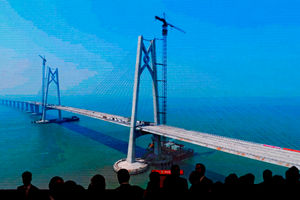How Aldridge firm helped build the world's longest sea-crossing bridge
A specialist engineering company from Aldridge has played a key role in the building of the world's longest sea-crossing bridge, linking Hong Kong to the Chinese mainland, which opened this week.

Chinese president Xi Jinping presided over a ceremony in the city of Zhuhai to open the 34 mile-long bridge linking it to the regions of Hong Kong and Macau.
Digital fireworks exploded on a screen behind him as leaders of the three cities looked on.

The £15 billion bridge took almost a decade to build and Aldridge-based RMD Kwikform played a vital role in making the ambitious project a reality.
The company, part of the giant Interserve construction and services group, one of the world’s go-to experts when it comes to the field of formwork and falsework – the temporary structures used for moulding concrete and supporting building work on construction sites around the globe.
It employs around 2,000 people around the world, working on projects from Australia and the Middle East to the USA, where it is involved in building the new Las Vegas Raiders football stadium in Paradise, Nevada.
But those projects rely on the technical know-how of the team of engineers at its head office in Brickyard Road, where it employs around 120 people.





